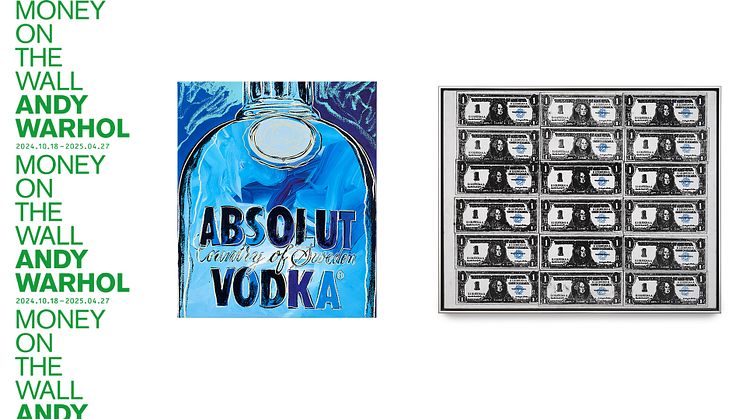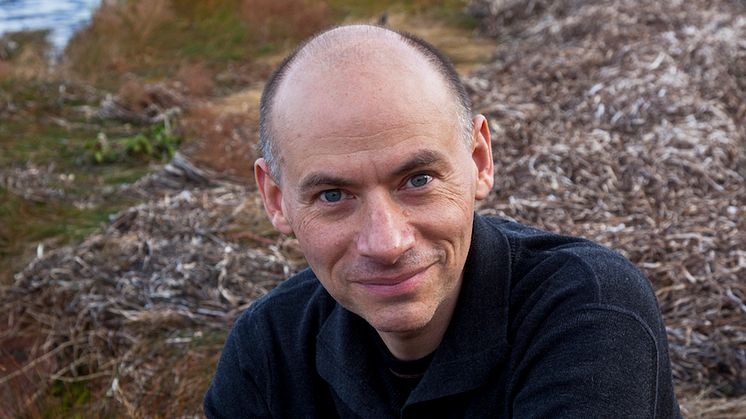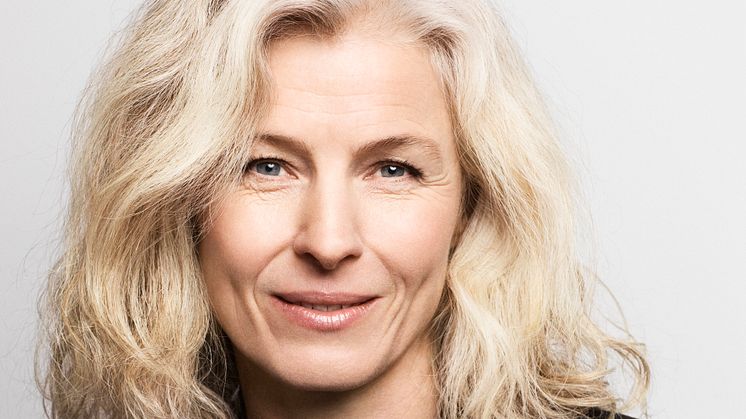
Pressmeddelande -
Spritmuseum presents Money on the Wall: Andy Warhol, Oct 18th.
"I like money on the wall. Say you were going to buy a $200,000 painting. I think you should take that money, tie it up, and hang it on the wall."
- Andy Warhol, 1975
In Spritmuseum’s upcoming exhibition Money on the Wall: Andy Warhol, curated by art critic Blake Gopnik, one of the world's foremost experts on Andy Warhol, the focus is on what Warhol called Business Art — "the step that comes after art."
"People who claim Andy Warhol was a sell-out are absolutely right. Business Art was one of his most important and influential art forms. And from the very beginning, the dollar bill was one of Andy Warhol’s favourite motifs," says Blake Gopnik.
From the day he launched his Pop Art, early in 1961, Warhol played with the idea that he was participating in the money-making values of the consumer culture he depicted. By the end of the 1960s, Warhol was participating in — and played a role in launching — a new trend in conceptual art that saw the vehicles of business and finance used as art supplies. He coined a name for it: Business Art, "the step that comes after art." It is hardly an exaggeration to say that modern life in the West is essentially built around money, and the power and goods it can buy. Few artists have grappled with that basic fact as fully and fiercely as Warhol did. His art asks viewers to do the same.
The exhibition begins with a section on Warhol’s work as a commercial artist in the 1950s. This is followed by a section on the classic Pop Art pieces, touching on economics, commerce, and commodification. One of its high points is "Soap Opera," an early Warhol work that consists of genuine TV commercials combined with scenes improvised by his entourage.
Money on the Wall includes a selection of Warhol’s purely commercial works, such as video commercials for products ranging from laxatives to ice cream. Many pieces in which he features as an advertising model, fashion model, film maker or restaurateur are also included.
The show also looks at a group of postwar artists, including Yves Klein, Chris Burden, and Lee Lozano, who, like Warhol, engaged with business and finance to make art about our economic realities. Finally, the show presents several contemporary artists engaging with similar themes, including Darren Bader, Andrea Fraser, Takashi Murakami, Carey Young, and the American art collective MSCHF.
"These artist's work provide a context enabling a new understanding of Warhol’s ‘sell-out’ in the 1970s and 80s — including his lucrative portraits, ads for Absolut Vodka, and pastiches of Edvard Munch’s famous lithographs," says Mia Sundberg, art curator at Spritmuseum.
Blake Gopnik, born 1963, is an American art historian, writer, and critic based in New York. He is one of the world’s leading Andy Warhol experts and has written a comprehensive biography, Warhol (published 2020). Based on years of archival research and interviews with hundreds of Warhol’s friends, lovers, and enemies, the book traces the birth of Warhol’s innovations, and how they shaped how artists have thought and worked from his day to our own.
Dates: 18th October 2024 to 27th April 2025.
Artist list: Genpei Akasegawa, Chris Burden, Ed Keinholz, Lee Lozano, Robert Morris, Takashi Murakami, Darren Bader, Andrea Fraser, Jens Haaning, Mason Rothschild, Bernar Venet, Carey Young, Andy Warhol, the art collective MSCHF.
Lead project curator: Mia Sundberg, Spritmuseum. mia.sundberg@spritmuseum.se +46 70 7327910
Press contact: Joanna Sundström, Part Projects. joanna@partprojects.se +46 73 3466662
Pictured: Andy Warhol, Absolut Warhol, 1985, 2 original paintings, 141x115 cm. © 2024 The Andy Warhol Foundation for the Visual Arts, Inc. / Licensed by Artists Rights Society (ARS), New York
Andy Warhol, Eighteen One Bollar Bills, 1962, Polymer paint, 61x76.2 cm. © 2024 The Andy Warhol Foundation for the Visual Arts, Inc. / Licensed by Artists Rights Society (ARS), New York
High resolution files are offered on request.
Relaterade länkar
Ämnen
Kategorier
Spritmuseum is an interactive museum with Swedish drinking history and traditions in the centre. The museum is located on Djurgården in Stockholm, and is home to the renowned art collection Absolut Art Collection.








